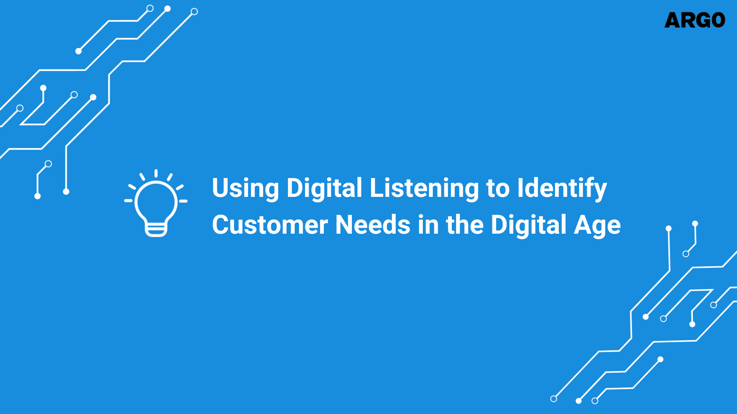Using Digital Listening to Identify Customer Needs in the Digital Age

Achieving a competitive advantage in today’s marketplace requires consistently delivering great customer experience while meeting individual needs in personalized ways. However, successfully identifying needs in a digital environment presents a technological challenge. A successful solution provides the ability to identify consumer needs by digitally ‘listening’ to their behavior and feedback, proactively asking the right questions, and discovering a customer’s financial goals and aspirations.
Great prospect and customer listening ability is a prerequisite for offering a competitive customer experience in today’s market. A customer-centric delivery business model increases customer acquisition by accurately interpreting and rapidly responding to needs. As more consumers prefer to conduct business through digital channels, financial institutions lose the ability to listen to customers and prospects as they had in a face-to-face model. However, digital technology can support a new business model strategy, including ‘listening’. A successful model considers three key listening factors: when to listen, how to listen, and response timing and accuracy for achieving customer acquisition and satisfaction objectives.
In a market with increasing digital consumer preference, research shows digital consumers are 60 percent through the buying process before they engage an institution. Successful solutions employ digital listening to detect and proactively engage customers early in the customer journey. Four pillars of listening capabilities assist FIs in listening to their customers. Those pillars are:
- Sensory listening detectors—Detecting and interpreting customer needs based on digital behavior
- Personal financial planning—Obtaining self-disclosed information related to customer needs through Accumulator, our goal-centric personal financial planning tool
- Intelligent questionnaires—Asking a single question or posing a series of related survey questions to obtain direct feedback
- Customer help requests—Receiving user input from digital tools such as Chat or clicks on frequently asked questions (FAQs) or Help links and engaging when a need is detected
For more information, download the Actively Listening to Customer Needs interview document.

